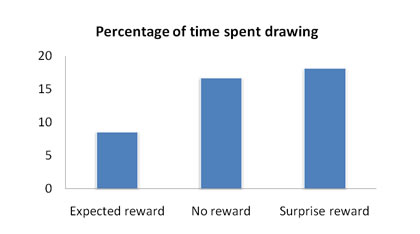Go everywhere.
Get everything.
Use everything on everything.
My name is Jesper Juul, and I am a Ludologist [researcher of the design, meaning, culture, and politics of games]. This is my blog on game research and other important things.
Go everywhere.
Get everything.
Use everything on everything.
I’d heard stories about pigs playing video games, but it turns out there is actual video footage to be found.
In this slightly condescending program about animal intelligence, go to 2:31 to see Hamlet, the video game-playing pig!
Hamlet appears pretty adept.
Weirdly, the game played is remarkably similar to one of the balance tests in Wii Fit, where you also have to move an object on top of a bluish rectangle. I don’t know what that means.
Behold the cover of the latest issue of Wired:

Behold the article “How the Tablet Will Change the World“.
Compare to another Wired prediction, from 1997. The browser is dead and will be replaced by “push” technology:

This is not to say that the iPad will fail.
But if history has taught us anything, it’s this: If something is on the cover of Wired, it’s future is in serious jeopardy. Iridium. The Long Boom. Sega.
Perhaps this is what Wired is: Current trends, extrapolated to the max, made into the strongest possible predictions about the future.
Back from Game Developers Conference 2010 and trying to get my bearings like everybody else.
On the heels of my twitter map of GDC 2009, here is a word frequency map of this year’s conference. I think they give a decent picture of what was going on if you weren’t there.
Anticipation before the conference starts.
Social games loomed large, as did Facebook, FarmVille, the iPhone, Android, and indie games.
While social games and tutorials were still happening, this was completely overshadowed by the announcement of the PlayStation Move controller.
The expo floor opens (“booth”), Uncharted 2 is big, and the award show dominates.
Sid Meier’s keynote, parties, more expo booths. Harmonix, FarmVille. @pocketprotector wins the prize for most tweets.
Phaedrus’ aka Will Wright’s “surprise” talk takes a lot of space. Mass Effect.
A great time, PlayStation move (again), Gabe Newell, time to go home. “See you guys next year.”
The NYU Game Center Lecture Series: Journalist Panel
Date: March 25th
Time: 6PM to 7:30PM
Location: 721 Broadway, Lower Level Room 006
RSVP: gamecenter@nyu.edu
Please join us for a panel discussion with three important voices from the world of game journalism. Who writes about games? What is the future of game criticism? Where does game news fit into the game industry ecosystem? How is the game press affected by the collapse of print? Why are we still looking for the Lester Bangs and Pauline Kael of game reviews? Come hear our esteemed panelists wrestle with these and other questions and be sure to bring your own.
Stephen Totilo is a reporter based in Brooklyn, New York. He’s the deputy editor for video gaming blog Kotaku. Prior to joining Kotaku, Totilo worked for four years as MTV News’ first full-time video game reporter. His work appeared on-line and on-air across MTV, MTV2, MTVu, MTV’s international channels, MTVNews.com and the MTV Multiplayer blog, which he founded. He also has written about video games for The New York Times, Newsweek, Time, IGN, and Gamespy. One of his best-known projects was a series of critical exchanges written with former Newsweek games writer N’Gai Croal. Totilo holds a masters’ degree from Columbia University’s graduate school of journalism. He also Majored in English at NYU.
Jamin Brophy-Warren is a writer covering arts and entertainment with a focus on videogames and the president of Kill Screen Magazine (http://www.killscreenmagazine.com/). He spent four years at the Wall Street Journal as an arts and entertainment reporter and previously was a music critic for Pitchfork Media. He’s spoken at Harvard and New York University and currently writes columns for the Wall Street Journal and GOOD Magazine (http://www.good.is/series/kill-screen-on-good/). In 2009, he was chosen to be a member of Slate’s annual gaming club (http://www.killscreenmagazine.com/) and his writing has appeared in LA Times, Vanity Fair, Fast Company, and others. He graduated from Harvard University in 2004 with a focus on cultural theory and lives in New Haven, Connecticut with his wife Sorcha.
The Journal of Virtual Worlds has a new issue out, Virtual Economies, Virtual Goods and Service Delivery in Virtual Worlds.
Editor′s Corner
Why Virtual-World Economies Matter
Mandy Salomon, Serge Soudoplatoff
Interactive Online Exhibits and Demonstrations
Rethinking Virtual Commodification, or The Virtual Kitchen Sink
Lori Landay
Invited Articles
On Money and Magic
Edward Castronova
Characteristics of the Virtual Economy (after ‘State of Play VI’ Conference , 2009)
Julian Dibbel
China′s New Gold Farm
Anthony Gilmore
Virtual Goods: Good for Business?
Nic Mitham
Peer Reviewed Research Papers
“We Will Always Be One Step Ahead of Them” A Case Study on the Economy of Cheating in MMORPGs
Stefano de Paoli, Aphra Kerr
An Exploration of Entrepreneurship in Massively Multiplayer Online Role-Playing Games: Second Life and Entropia Universe
Stéphane Kieger
Born Virtuals and Avapreneurship: A case study of achieving successful outcomes in Peace Train – a Second Life organization
Robin Teigland
Virtual Commerce (V-Commerce) in Second Life: The Roles of Physical Presence and Brand-Self Connection
Seung-A Annie Jin, Justin Bolebruch
Research Papers
Understanding “Gold Farming” and Real-Money Trading as the Intersection of Real and Virtual Economies
Richard Heeks
World of Warcraft: The Viability of Massively Multiplayer Online Role-Playing Games as Platforms for Modeling and Evaluating Perfect Competition
Eli Kosminsky
“Think Pieces”
Currencies and Capitalisms on the Internet
Minna Ruckenstein
Licensing Considerations for OpenSim-Based Virtual Worlds
Shenlei E. Winkler
Monographs
Teens and Virtual Goods: The Fun, Useful and Affordable Luxuries that are Driving the Virtual Economy
Maura Welch
Editor-in-Chief′s Corner
Topping from the Viewfinder: The Visual Language of Virtual BDSM Photographs in Second Life
Shaowen Bardzell
Passage in 10 seconds, a remake of Jason Rohrer’s Passage.
My favorite part is the audience member at the end, declaring the game to be art. It’s a relevant commentary – what causes something to be “art”? There certainly needs to be an audience willing to understand it as such. And here it is.
(Via Nick Montfort.)
Jesse Schell’s “Future of Games” talk at DICE is getting a good deal of buzz and discussion.
So here are a few thoughts: The second half of Schell’s talk centers on external reward systems such as the Xbox Live achievement system, and he describes a possible future (that he appears somewhat ambivalent about) in which everything – TVs, toothbrushes, pianos, cars, schools are designed as game-like systems that constantly reward you with points for various actions. Such as, well, brushing your teeth.
Schell’s basic argument is that external rewards are an incredibly strong psychologically motivator.
Yes and no. If you think about the car that gives you points for a mundane activity such as driving fuel-efficiently, then certainly external rewards can work as a motivator.
But I think that Schell a.o. overlook that external rewards are also known to be strong demotivators. A famous 1973 experiment (“Undermining children’s intrinsic interest with extrinsic reward“) showed that when nursery school children consistently received external rewards for drawing, they lost interest in drawing and began drawing less.
Here’s the graph from a write-up of the results that also mentions similar studies of adults. (Expected reward = consistently receiving a reward for drawing.)

But how can that be? Aren’t rewards motivating? Not necessarily, because rewards may trick you into forgetting your original motivation. You think you like drawing, but when you are consistently showered with rewards for doing it, you start thinking that you are really in it for the rewards …
Marc LeBlanc once pointed me to the business book Punished by Rewards: The Trouble with Gold Stars, Incentive Plans, A’s, Praise, and Other Bribes. From the book description:
Promising goodies to children for good behavior can never produce anything more than temporary obedience. In fact, the more we use artificial inducements to motivate people, the more they lose interest in what we’re bribing them to do. Rewards turn play into work, and work into drudgery.
As you can see, this is completely at odds with the argument that Schell is making. I can’t claim to be an expert on the psychology here, but it does seem that external rewards may have a kind of reversal effect: If you dislike the activity, external rewards make it more attractive, but if you like the activity, external rewards make it less attractive.
So one theory to use could be Michael Apter’s Reversal Theory, according to which we switch between telic (focused on external goals) and paratelic (focused on immediate enjoyment) states. Hence the introduction of an external reward will switch us from the paratelic state where we are enjoying a task, to the telic state where we are performing a task for external rewards.
On a more personal note: I sometimes hear of universities that want to reward researchers for publishing papers or talking to the media. This always strikes me as unpleasant because it discounts the pride that we (hopefully) have in our research. If we started to do research only for the external rewards, our productivity would surely drop.
And that, my friends, is why external rewards can be demotivating.